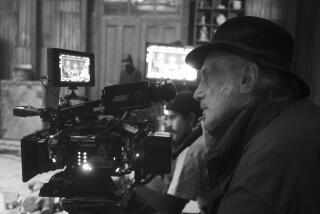Children at work in the awe-inspiring ‘The Devil’s Miner’
The straightforward simplicity of Kief Davidson and Richard Ladkani’s moving documentary, “The Devil’s Miner,” is deceptive at first -- especially as documentaries have lately taken such quirky, variegated forms. But 15 minutes into it, you are spellbound, heartbroken and unaccountably cheered -- your faith and admiration in humanity restored.
It’s a testament to the filmmakers’ sensitivity and steady hand but mostly to the extraordinary intelligence and courage of their subject, a 14-year-old boy named Basilio Vargas, who lives and works with his 12-year-old brother, Bernardino, in the nearly depleted Cerro Gordo silver mine near the colonial Andean city of Potosi, Bolivia.
“The Devil’s Miner” is a film about child labor, but it’s no lugubrious late-night appeal for First World pity, which is the last thing the formidable Basilio inspires. Basilio’s father died when he was 2, and he has taken on the role of paterfamilias. He and Bernardino work in the mine to help support their mother and baby sister Vanessa and to pay for school, which they take seriously. For Basilio, a day spent in the classroom is like a vacation compared with the crushing and terrifying work in the mine. Acutely aware of the dangers he faces -- most miners die prematurely in their 30s and 40s, from silicosis -- Basilio and Bernardino persevere, determined to finish school and go into teaching and civil engineering.
Davidson and Ladkani enter Basilio’s world humbly and unobtrusively, content to follow him where he leads and allowing him to narrate his own story. Despite the devastating realities of his life, Basilio evinces an awe-inspiring degree of hope, joy and determination in the face of hardship. The filmmakers risked the same dangerous conditions the boys encounter daily in the mines detonating explosives under conditions not much improved since the 16th century. They also follow the boys as they shop for school uniforms, get their hair cut, watch TV and attend class in Potosi, where Basilio hides his job from classmates so as to avoid getting called a “rock thief” or “dust breather.”
Among the most fascinating aspects of their lives is a dual belief system, derived from the early Colonial era, when the Spaniards exploited the local Indians for labor. As Basilio explains to his brother one night in the mines, an Indian revolt was quashed when the Spaniards devised a way to scare them into working. Constructing devil-like figures with horns and tails, they told the Indians that this “god” (or “dios”) would kill them if they didn’t work. Because the Quechua language lacks the letter “D,” the word became “tios,” and later “tio,” “uncle” in Spanish. Since then the miners have constructed a Manichaean universe in which Tio rules the underworld. Devout Catholics, they attend Mass every Sunday and hang crucifixes over the entrance to the mines. But deep inside every mine can be a found a terrifying statue of the devil, which miners pay tribute to with coca leaves, cigarettes and alcohol so that they may be protected in a world where God’s love doesn’t reach.
The local priest indulges the belief, despite his wish that the miners might someday believe in a God they don’t fear, because he understands their need for a kind of double-reinforcement against danger in this incredibly hostile world. A beautifully shot and scored journey into a remote, forgotten world, “The Devil’s Miner” should be experienced by all but especially by Basilio’s adolescent contemporaries. This is social documentary at its best.
*
‘The Devil’s Miner’
MPAA rating: Not rated
A First Run Features release. Producer-directors Kief Davidson, Richard Ladkani. Director of photography Richard Ladkani. Editor Kief Davidson. Running time: 1 hour and 22 minutes. In Spanish with English subtitles.
Exclusively at Fairfax Cinemas, 7907 Beverly Blvd. (at Fairfax Avenue) (323) 655-4010.
More to Read
Only good movies
Get the Indie Focus newsletter, Mark Olsen's weekly guide to the world of cinema.
You may occasionally receive promotional content from the Los Angeles Times.










